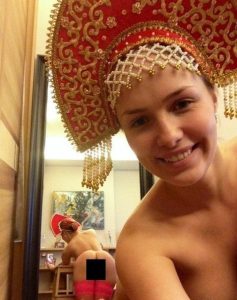Streetwear startups have become increasingly popular over the years. And although I am not personally super into streetwear, I have a lot to offer in terms of industry expertise. In this article, I will give you a comprehensive understanding of streetwear branding, some pros and cons of starting streetwear branding in general, and my top recommendations with over 15 years of experience on how to start a streetwear brand. Let’s get into it!
WHAT YOU’LL LEARN
FEELING LAZY? – LEARN MY 6 BEST TIPS IN JUST 30 SECONDS!
CLICK THROUGH THE SLIDESHOW BELOW…
BUT BEFORE WE GET STARTED…
I love helping startup brand founders succeed, so I created a bunch of free guides that will help you with your business.
They won’t be free forever, so make sure to grab them while you can.
WHAT IS A STREETWEAR BRAND?

Streetwear brands are literally just that – stylish clothing that you wear on the street. It’s not formal wear and it’s not couture. It’s clothes made for everyday looks. So, streetwear is typically very simple in design and manufacturing, but all about the branding.
Supreme is a great streetwear brand example. Supreme is essentially all basics with their brand displaying on each item. Even when Supreme does collaborations with other brands, like they did with Louis Vuitton, all they did was paint on their logo the typical Louis Vuitton graphics and patterns.
A sweatshirt is a sweatshirt at the end of the day, but what makes people want it is the Supreme branding, much like a luxury brand like Calvin Klein.
With streetwear, you are buying the brand. You are buying the people that wear the brand. You are buying into the tribe of other people that look like you that are wearing this. It’s an identity more than just a nice thing to wear. And there are so many different identities in streetwear that could range from extreme sports to genres of music to big flowers and bows.
PROS AND CONS OF HOW TO START A STREETWEAR BRAND

Image credit Supreme Instagram
GETTING A STREETWEAR GARMENT MADE
Let’s talk about the pros and cons of getting your streetwear garment made
PRO: IT’S EASY TO MAKE
Streetwear is accessible and easy to make. All you need to do is put your logo or your graphics on a garment that is already created, like a t-shirt or a ball cap. These pre-made garments are called blanks. And, the process of putting your logo on blanks to create a made-to-order product is called print-on-demand. Knowing this is the ultimate hack because this process will save you a lot of money and product development.
Another nice thing about streetwear is that you’re able to test what styles do well and what styles don’t do well more easily. For example, you could create 10 graphics. And those 10 creations could have an MOQ of only 1. Yes, I said one. You would just pay Amazon Print-on-Demand or Contrado or any of the other companies that do print-on-demand garments about $20-$30 to have your design custom printed. (Then you could go and sell your branded shirt for $50 or more).
You get to skip the entire timely and expensive sampling process!s. Whereas if you were designing something from scratch, you would have to go through the entire product development process, needing an MOQ of about 25 – 50 pieces, instead of just 1. And, with traditional manufacturing, if that style didn’t do well, you would have the added stress of needing to get rid of the slow moving inventory. If you’re just doing print-on-demand, it’s just one piece to sell, so the stakes are low.f.
CON: BECAUSE STREETWEAR IS EASY TO MAKE, THE MARKET IS SATURATED STREETWEAR
Because creating streetwear is so easy, everyone wants to do it. And because it’s so easy thanks to blanks, it all kind of looks the same. So, you really need to focus on having stand-out graphics. If not, it’s just going to look like everyone’s and their mom’s and their grandmom’s at this point! I am going to talk a little more about a few ways to stand out with design and marketing when I get to the tips section.
WORKING WITH A SMALL STREETWEAR STARTUP BUDGET
Starting with a small budget… not a problem.
PRO: WITH STREETWEAR, IT’S EASY TO START SMALL AND SCALE
Here’s the thing people think scaling is about making more products, but what scaling is really about is knowing your data and where to invest your new product dollar. Here’s what I mean.
When you are a starting a new streetwear brand, you don’t have any data. You can do all of the research in the world, which is great and don’t get me wrong, important. But at the end of the day, you need data to make decisions that will lead to growth.
Testing and collecting data is a strategy you must use when starting your own fashion brand. Many people believe that trends are created by the fashion gods at Vogue, but creating something that looks amazing all willy-nilly is not how this industry works. Creatives actually have to design into the data.
Here’s what really happens in the design process. Brands will look at past data to see what sold well and what didn’t. They then make more of what sold, and stop making what didn’t. You can do all the research in the world, but only testing with your customer will be able to tell you what they actually like. .
As a new brand you are looking for the easiest way to get data, and what I recommend to all of my clients is always starting small.
As we touched on a bit already, you can have an MOQ of just 1 piece if you print-on-demand. And having a low MOQ can make the testing and data-collecting process a lot easier.
The first step to testing is coming up with a finite budget. Even if you think you are going to raise money, you have to have an exact number before you start this process, so write down what you have to work with right now..
Say your number is 5K that means you would have about $102k for the actual product. The rest you would save for marketing, and season 2.
If making shirts costs $10, that would mean you can make 10 pieces of clothing.
If our goal is to collect data, it is better to create 10 styles, making 1 of each piece, than 1 style with 10 pieces of inventory.
This is important! Because if you make tons of inventory of only a few styles, and no one is buying them you’re not going to know why. Is it because of the long sleeves? The color? The print? All you are going to know is that your 10 shirts are not selling. If you have multiple styles and tons of data points, you’ll be able to see the commonality of items that sell out immediately or don’t sell even when you put them on sale for 80% off. Maybe you will realize that your blue shirts don’t sell, and people love red. Or that they don’t like long sleeves, and only buy short sleeves.
Testing allows you to know what your customer wants. So that when you place your bulk order, you know you are investing your money and resources wisely is what your customers really want. You can feel safe knowing that you understand and know your customer based on the data.
CLIENT CASE STUDY: TESTING
Even big brands test. When I worked for Walmart, we would order about 1 million pieces per style per color. Those are huge orders! But we didn’t get those bulk orders until we tested. First, we would receive a test order for a new style of about 10,000 pieces. Walmart would then put them in their top 100 stores, or the stores that perform the best in the entire country. If our new product at 10,000 pieces did not perform well in the top 100 stores, we would not get the bulk order. If they did well, we would.
We seem to think that everyone, even in fast fashion, is just pumping out garments flying by feelings and the newest trends. They’re not. What they are dong is testing. They’re getting data. And, small brands need to do that too. Doing print-on-demand for a streetwear brand is one of the easiest ways to do data collection. With a low budget, the ease of starting a streetwear brand small and scaling is as simple as it could be.
CON: THERE IS NOT A LOT OF CUSTOMIZATION WITH STREETWEAR
The downside to print-on-demand, and how easy it is to make even only 1 piece, is that there is not a lot of room for customization in the product.
You kind of get what you get. There are 3 sweatshirts to choose from, and you have to choose one. There are 10 colors you have to choose from, and you have to choose one of them. You’re not going to get these crazy silhouettes or colors when you do this. And that goes back to everything looking the same (the oversaturated market).
This is where you need to be able to differentiate yourself either through branding or designs to stand out from all of the same. The good news is there are some tricks to do this. Just keep reading.
MARKETING A STREETWEAR BRAND
What makes a successful streetwear brand? Knowing where to capitlize, and what to avoid is ½ the battle in starting a successful clothing company.
PRO: STREETWEAR IS GREAT FOR COLLABS & TENDS TO GO VIRAL
Streetwear is great for collaboration with influencers and tends to quickly go viral if successful. A lot of these streetwear brands will pick different influencers that are in their niche of streetwear – hip-hop music, skateboarding, you name it. And collaborate because the brand is built on those personalities and that customer identity.
Streetwear is primarily icon-based or logo-based. For example, brands often have these little caricatures that are associated, like bad bunny (see below). Think of streetwear like this, the product is the logo and graphics, not the apparel.
If you can collaborate with the right influencers, and the right niche personalities with the right reach, and create the designs that will reach those personalities, your brand can go viral really fast.
CON: STREETWEAR CAN BE A DISASTROUS INVESTMENT
The downside to collaborating is that if you choose the wrong person, it can mean disaster for your brand.
We’ve all heard the stories about the influencers with a million followers who couldn’t even sell 10 shirts. You have to be careful out there.
Again, streetwear is community-based. It’s all about what it is you are conveying to the people who are wearing it. And if the influencers you are choosing do not have as much influence as you think they do, you could fall into the trap of imploding your brand because you can’t move product.
We’re going to talk about data again. Because it’s so important.
A lot of people lose a lot of money on influencer collaborations by looking at the wrong data. Choosing influencers by their likes and follows is so 2020. Instead, try looking at the saves and the shares. How many times did people view whatever it is that the influencers are putting out and then save it? Or, even better, share it with someone else?? Those two metrics are much more important than how many followers they have, how many likes they get, and how many comments they get. Because all of those other factors can be purchased.
The other thing you are going to want to ask for when deciding whether or not to collaborate with an influencer is metrics. As professional influencers, it is their job to have those selling tools. They should be able to answer how many sales they typically get when collaborating with other brands – you want actual figures from past campaigns. And if they can’t answer that, you don’t work with them. It doesn’t matter if they have 10 million followers on Instagram. Run the other direction.
HOW I WOULD START A STREETWEAR BRAND – 6 TIPS

Image credit – Stussy Instagram
Here is what I would do if I started a street wear brand today…
1. START WITH MARKET RESEARCH – OBVIOUSLY
If I wanted to start a streetwear brand, I would start by doing market research.
Start by asking, what niche of streetwear are you going to go into? Who in the streetwear category are you speaking to? Today there’s not just streetwear like Stussey. For example, there’s also a trend of girly streetwear with big bold daisy flowers and colors going around right now, that is its own subset of streetwear. And, there are so many other niche streetwear categories. It’s not just the kind of baggy old-school clothes that we used to associate with streetwear.
2. (AS MENTIONED) COLLABORATE FOR CREDIBILITY
I would then choose to collaborate for credibility within the chosen subset and audience when starting a streetwear brand. The chosen collaborators don’t even have to be big influencers. I would actually choose the influencers with under 10K followers to start. I would just make sure that their communities are engaged. Again, look at those saves and shares. Look at who’s following them and find voices that people relate to.
5 small influencers that people genuinely love are worth so much more than a giant influencer that is not in your niche, or does not fit correctly to what it is you’re selling.
An example of this would be girls in bikinis. Swimwear brands often make the mistake of seeking out girls who pose as bikini models on Instagram. But, they are confused when their 100k likes don’t translate into sales. Why can’t these influencers sell swimwear?
The secret? Look at the comments. Fire emojis and hearts from mostly men, an audience uninterested in purchasing swimwear, are not going to move bikinis.
So here is what I would do with thos 5 small influencers. . Try designing something together, or using a piece of their art. I would then give them 50% of the profit of the collaboration because now I know, they will be invested in moving that product, with the financial and creative drive to do so. Yeah sure you’re cutting your bottom line, but you are getting that credibility that is important to streetwear.
3. GO FOR BLANKS
Don’t reinvent the wheel. You do not need to remake an entire t-shirt. Your customer is not going to notice that a t-shirt would be perfect if the sleeve was just one inch shorter. Because a sleeve that’s one inch shorter for that customer is going to be way too short for another customer. And you’re never going to please everyone. You’re never going to make the perfect shirt. You may be able to design the perfect shirt for you, but how many people do you know with your exact dimensions? Not a lot. So you just have to take what’s already out there, and get going.
And remember the people who are making blanks, that’s their job. They are ordering a million blanks. You better believe they have done their research and they’ve optimized for the general public with their sizing. Trust in the sizing. Go for the blanks. Keep your cost as low as possible. Don’t spend your cost on the product. Spend the cost on the collaborations and that branding around it that’s going to make you credible. Spend the cost on what is going to make people want to be a part of the community that you are starting with the streetwear brand.
4. GET CUSTOMERS INVOLVED
We’ve talked a lot about how streetwear is community-based. You are literally wearing a giant logo saying “I am a part of this crew.” So, I would get the community involved in the designs. You can do this with the influencers. They can blast out three designs and ask their followers, what do you all think, what do you want? And that’s your data right there. Your customers are telling you exactly what it is that they want to buy.
You’re able to move with what it is they like, making it not just about the data, but about building hype and customer involvement.
Everyone likes being part of something. People are seeing designs, they are getting excited, and they love being part of the movement.
Think about the psychology of people wearing logos and how they are choosing to be free advertising for a brand they are all about. They are hardcore fans, streetwear people. Capitalize on that psychology and fandom, by getting them involved. If they are part of it, then they are going to feel close to it. They’re not just going to want to buy it but they are going to want to tell people about it and spread the word.
5. MAKE LIMITED RUNS
Limited runs are also a way to build hype. Supreme does this – they have items they sell out of that day. And once they run out, it’s gone for good. This is going to give a sense of organic urgency.
Tell people that you are only making 10 of a certain style, sell out so there’s no extra inventory, and make your next collection. The next time that you have a launch, people are gonna think that they better buy now before it sells out.
This is better than those alerts you get for “2 day only sales”. We all know another sale is coming, we all know there’s going to be another promotion, and we all know it’s often fake emails claiming the product is almost sold out. But when you only make a limited amount, and you tell your customer that limited amount, it will light a fire in their hearts to buy.
6. USE PRINT-ON-DEMAND
If you can’t tell now already, I love print on demand. . I would be testing as many styles as I can possibly afford, gathering data for at least the first year or year-and-a-half. And then when I have that data, I would move into a really hard push with bulk orders, bulk pricing, and investing in the styles that I know would sell well.
Yes, print-on-demand is more expensive at first, but it’s going to be safer. I would plan to explode into scaling at the year-and-a-half to two-year mark when all of that data is collected.
WHERE ARE YOU STUCK STARTING YOUR STREETWEAR BRAND?

Image credit – Kith Instagram
Starting a streetwear brand takes strategy. Define your niche, find what makes you different, leverage through collaborations, build hype, start small with print on demand, and scale. Most importantly, connect your vision to the communities and through the communities you are trying to speak to.
So, how can I help you? Tell me where you are stuck in the comments, and let’s get your streetwear brand going!




КОММЕНТЫ